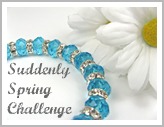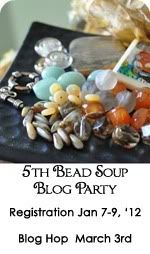It took a while but I finally got my act together and got out the camera and now I can talk about the casting class I'm taking. It is the lost wax casting method and for the many who have never heard of this, here's my story.
First you get a chunk of carving wax. The one I started with looked pretty much like this:

You can get carving wax in a variety of colors but these choices are not for esthetics -- each color has different properties of flexibility and melting temperatures. The purple one was recommended to me by my instructor as the best one for the items I planned to make. Next is a photo of what a carved item might look like.

Before it can be cast, however, there are couple more steps needed. The first is to take tiny tubes of wax (they come in a vast variety of diameters) and attach them to your carved piece much like the trunk (and possibly some branches) of a tree. That is the wax that will serve as the "sprue," the pathway the molten metal will travel to get to your mold. You'll see evidence of this in just a minute.
Here's what sprue wax looks like:
So after the sprue is attached to the carved piece the entire creation is attached to the bottom piece of a flask. There is a little raised bump in the bottom which will serve as the opening through which the molten metal will be poured. The rest of the flask is just like a small can with no top or bottom; the bottom piece snaps onto the "can" after you've attached your wax structure.

Next you have to mix and pour the "investment." Investment is a mixture of gypsum and silica in a white powder form. It looks alot like plaster of paris. It is mixed with distilled water at a specific ratio and has a very short working time. When it is mixed to the correct consistency it is poured into the open end of the flask completely encompassing the wax item. The flask is then set aside for a short time to enable the investment to set up. When the investment is set, the flask is put into a kiln for several hours during which the wax carving and sprue structure melts away. Where does it go? I don't know, I forgot to ask.
After the flask comes out of the kiln all the wax has been melted away and has left a cavity, or mold, of the carving and sprue inside the hardened investment. The flask is then turned upside down and positioned over a small hole on the top of a special kind of vacuum. Meanwhile the metal of choice is being melted in a crucible:
For our purposes we could use gold, sterling silver, argentium, bronze or brass. I chose to use a mix of copper and sterling silver known as Shibuichi. I didn't have to purchase the metal (a savings) because I had plenty of scrap to work with.
When the metal has melted completely, the vacuum is switched on and the metal is poured into the opening in what was the bottom of the flask but is now on top. The vacuum helps to suck the metal into all the open spaces in the investment mold. The flask is set aside to cool for a while. The still hot flask is picked up with long tongs and slowly lowered into a 5-gallon bucket of water. It sizzles and bubbles and the investment begins to break up and dissolve. After it is all dissolved, your hardened metal piece is left. Here's what my two pieces looked like:
 All in all, I'm pretty happy with the results. We have four weeks of class left so stay tuned to see what else I come up with!
All in all, I'm pretty happy with the results. We have four weeks of class left so stay tuned to see what else I come up with!For a much more in depth explanation with really GREAT photos, check out this blog:
http://bcyrjewelry.blogspot.com/2008/03/lost-wax-casting-process.html








2 comments:
THAT's EFFEN COOL! How big can you get away with casting?
Those are both so wonderful! Congrats on your smithing!
Post a Comment